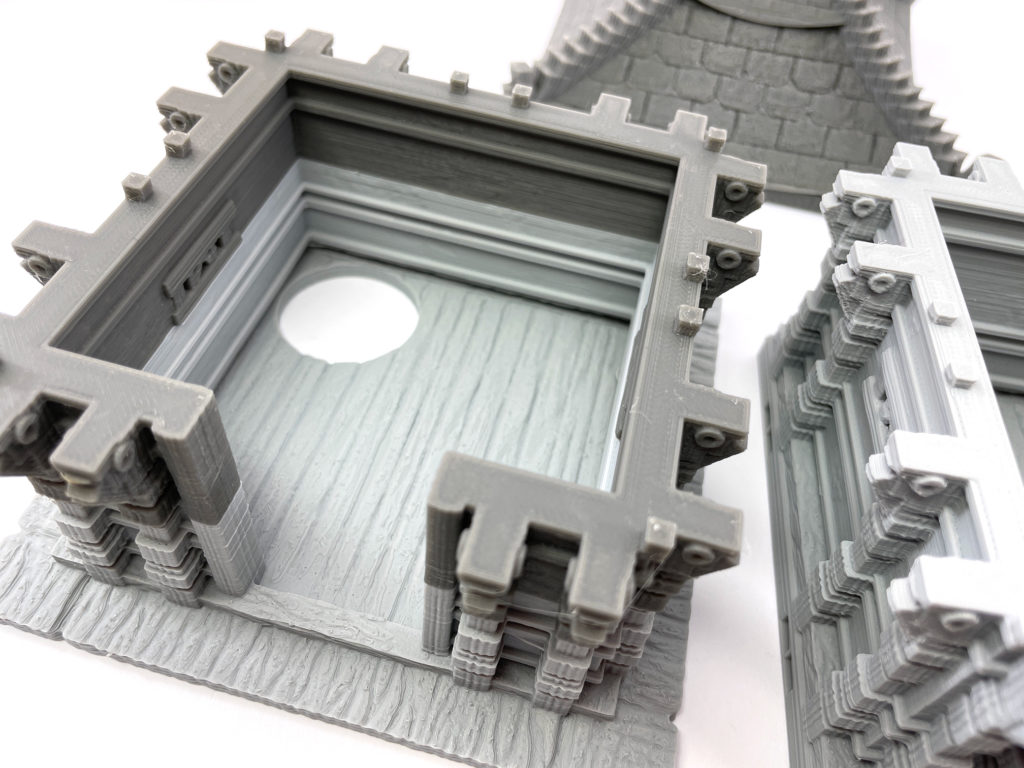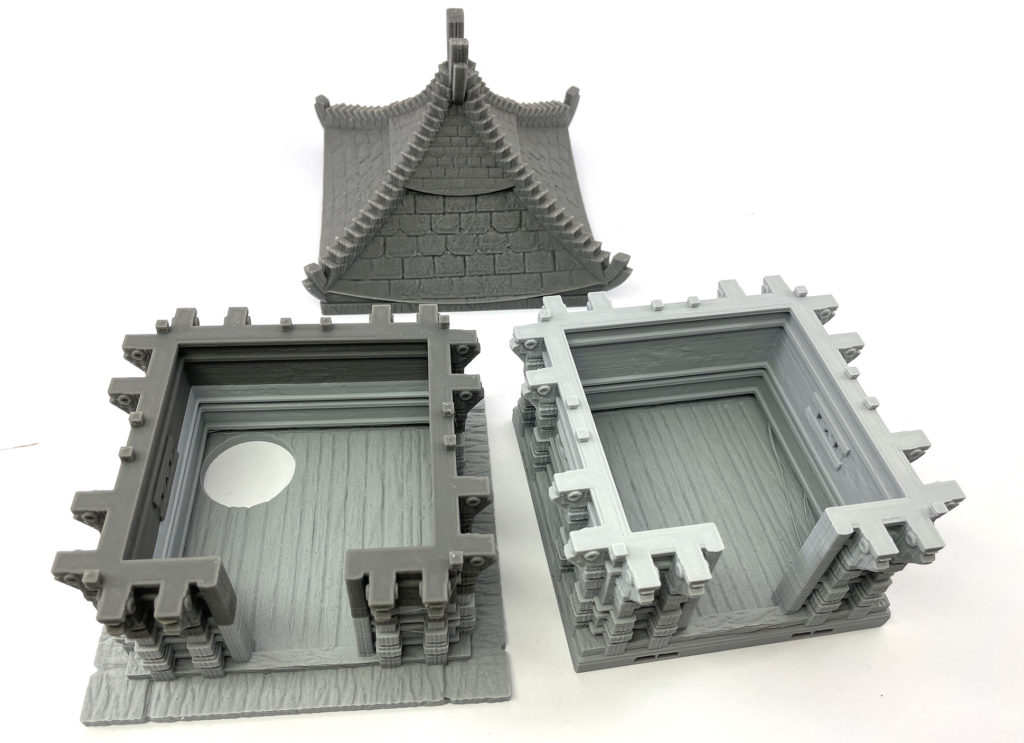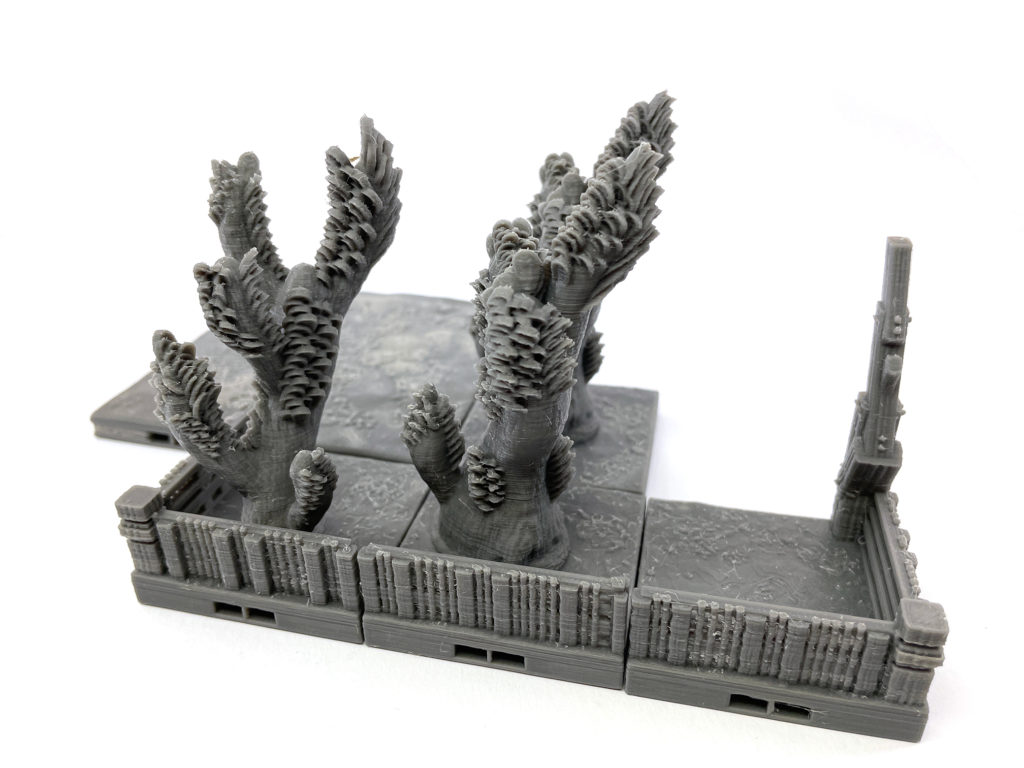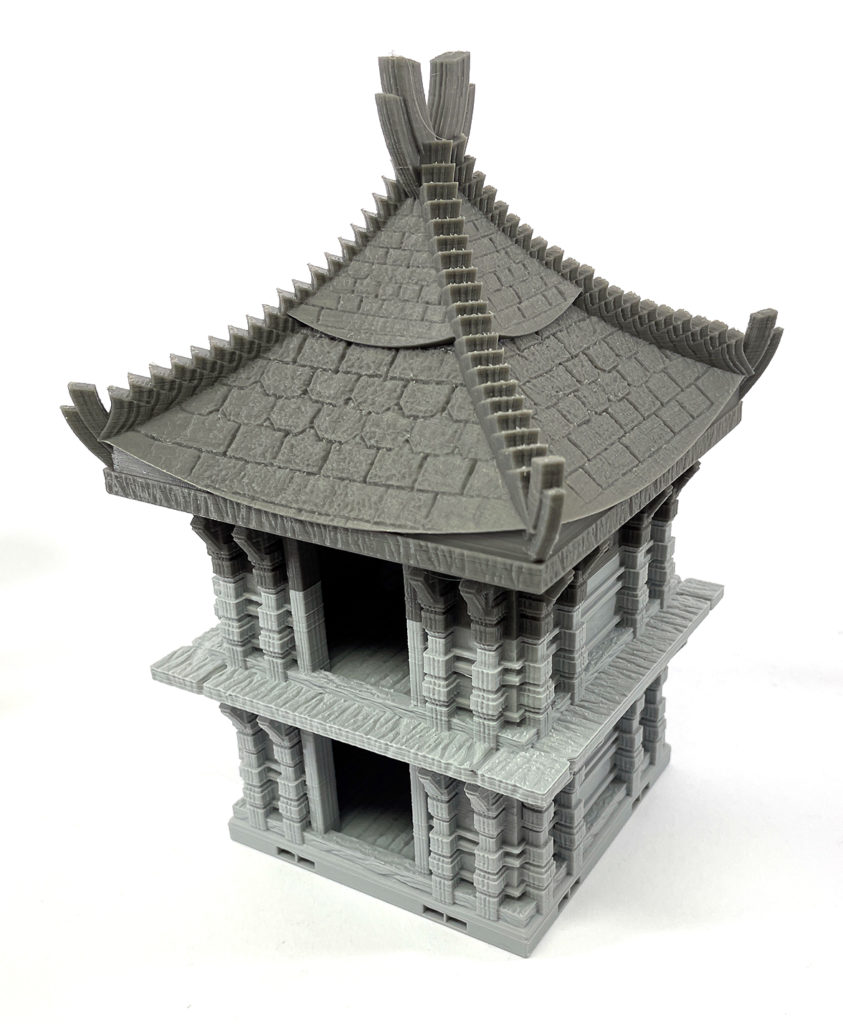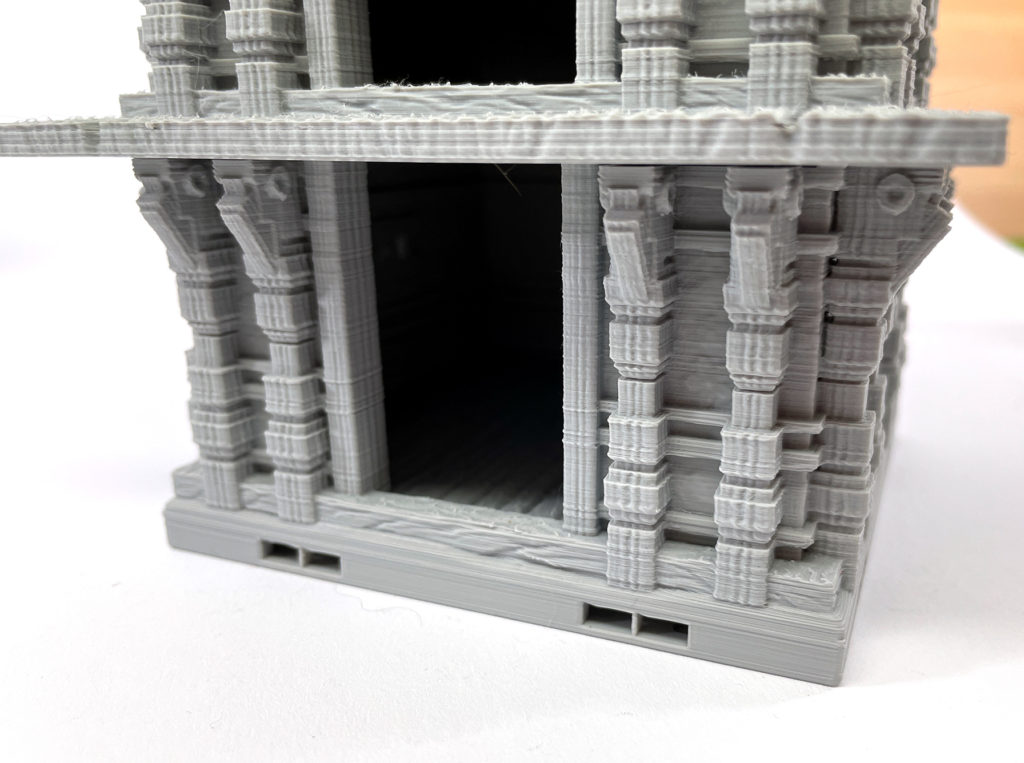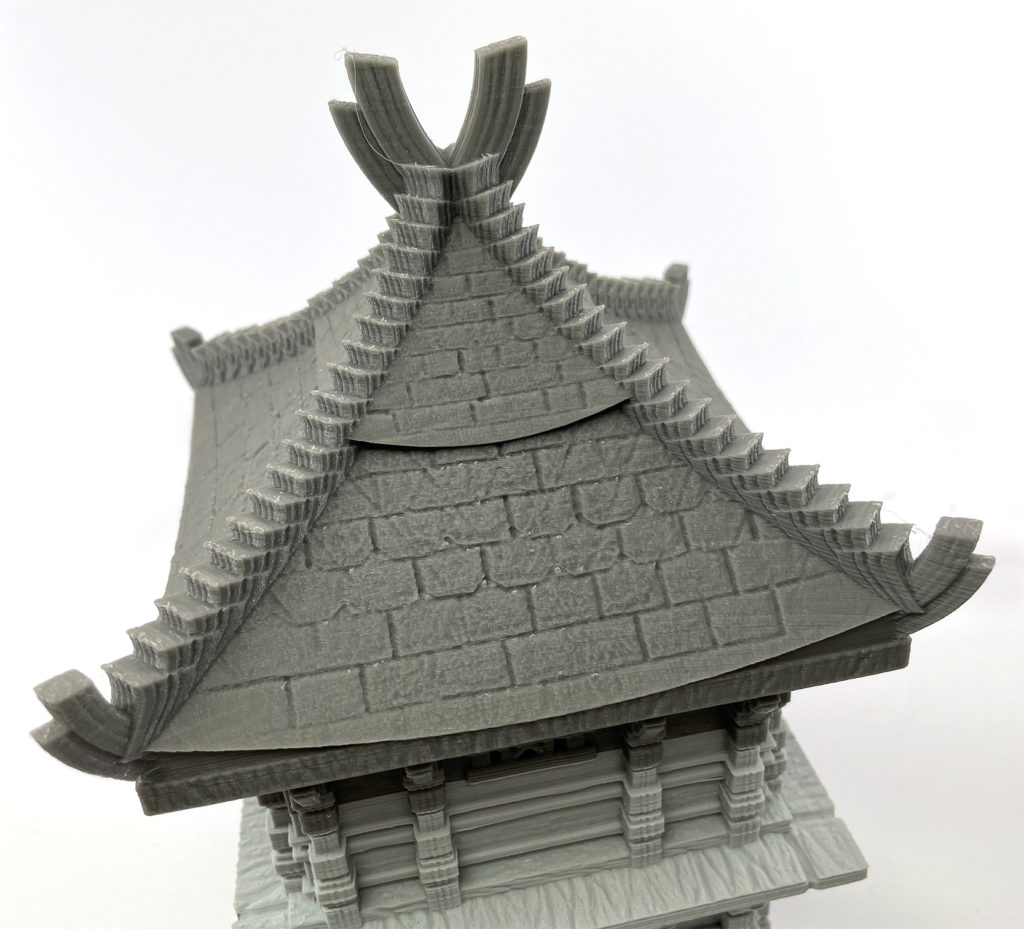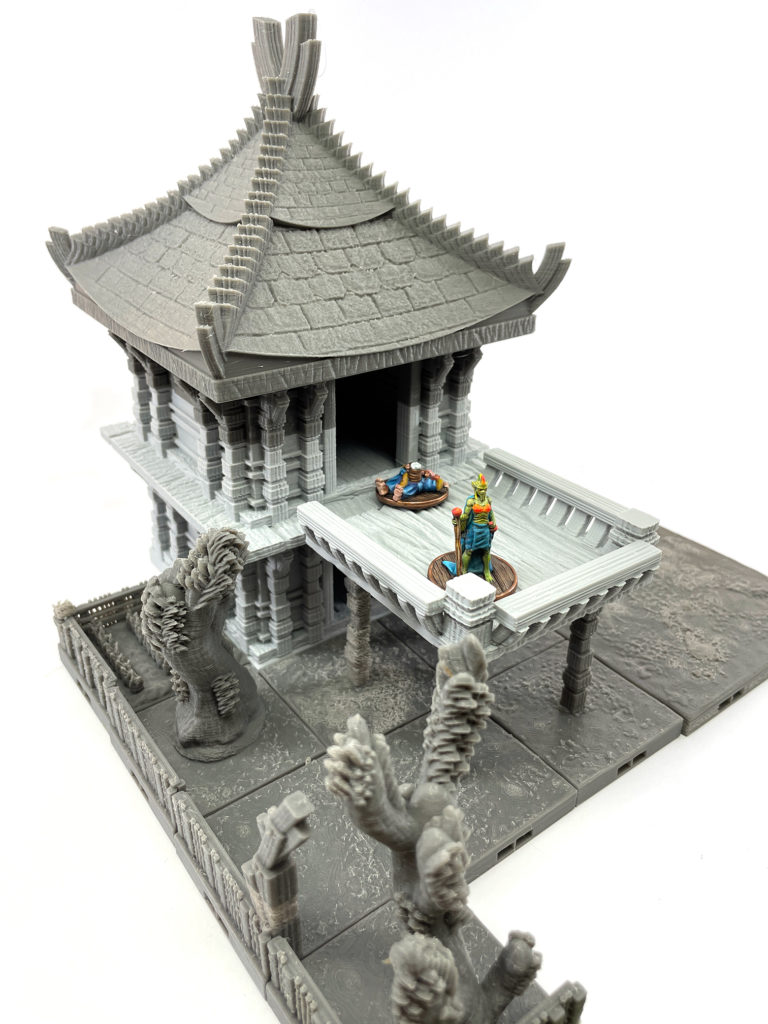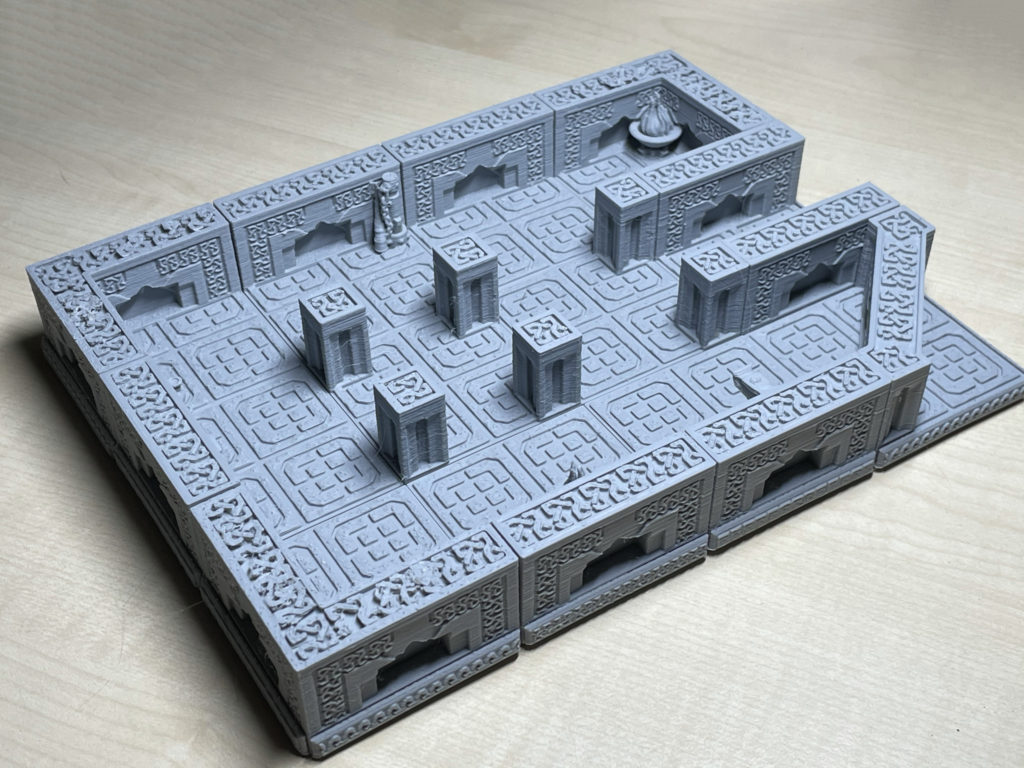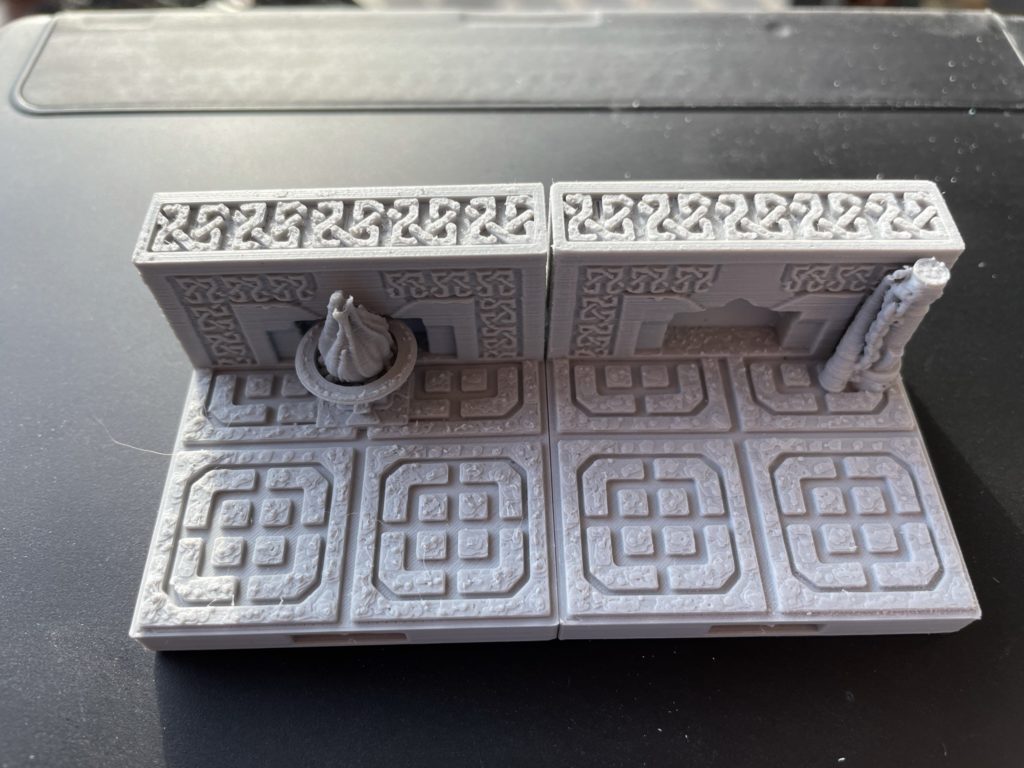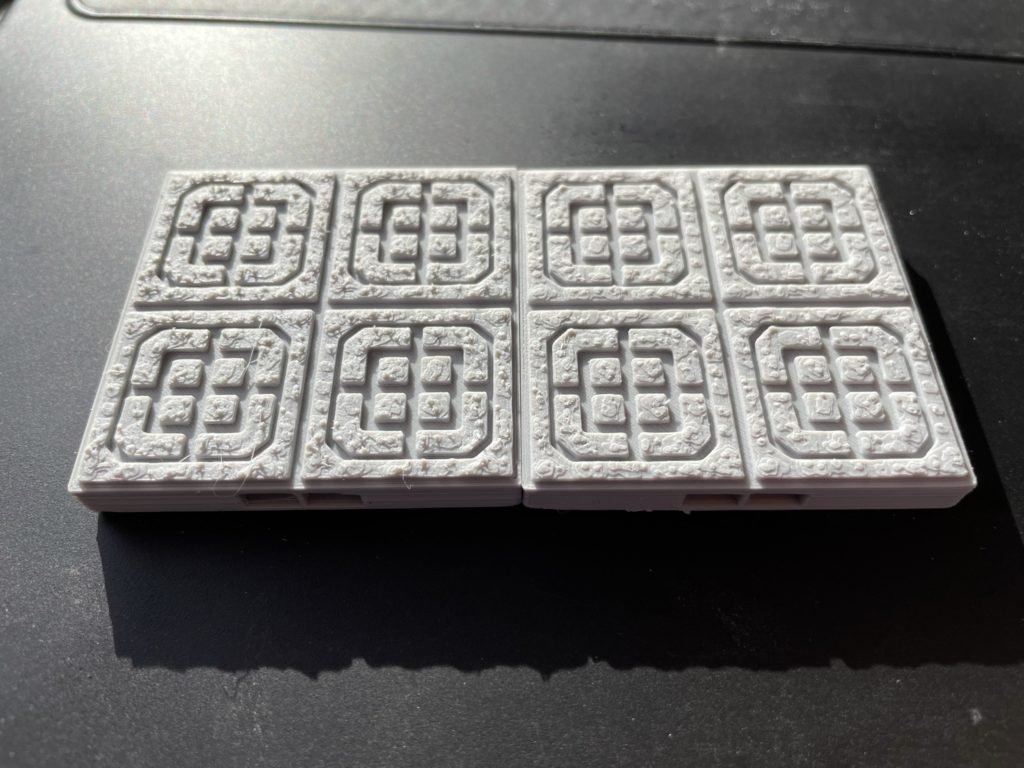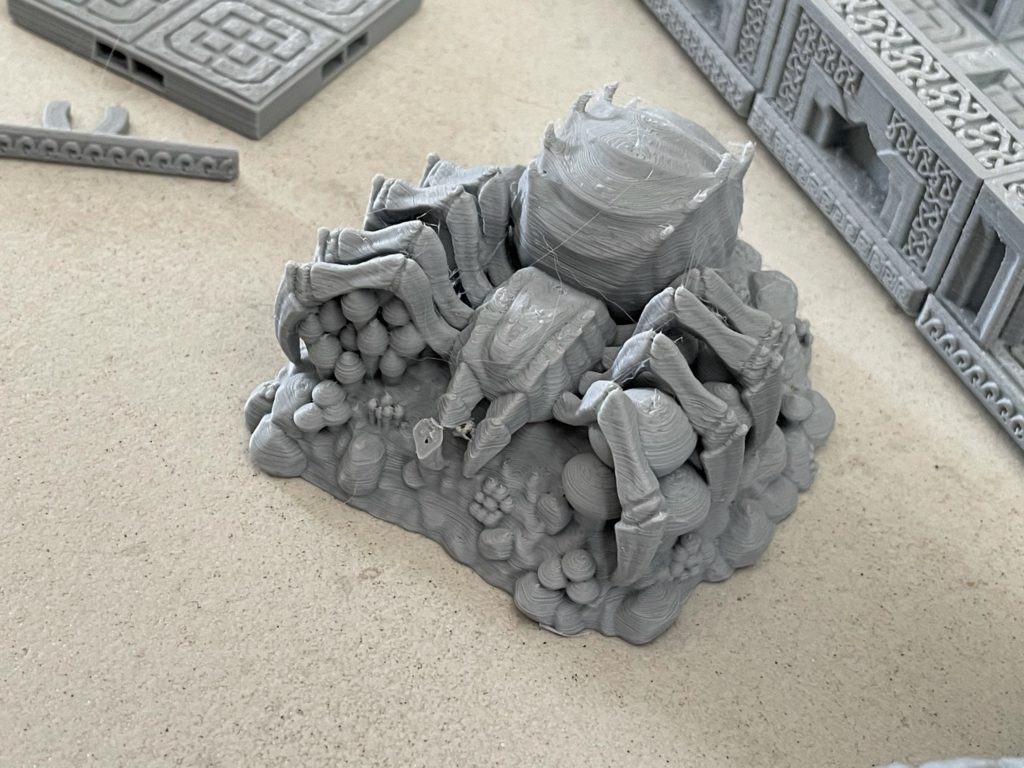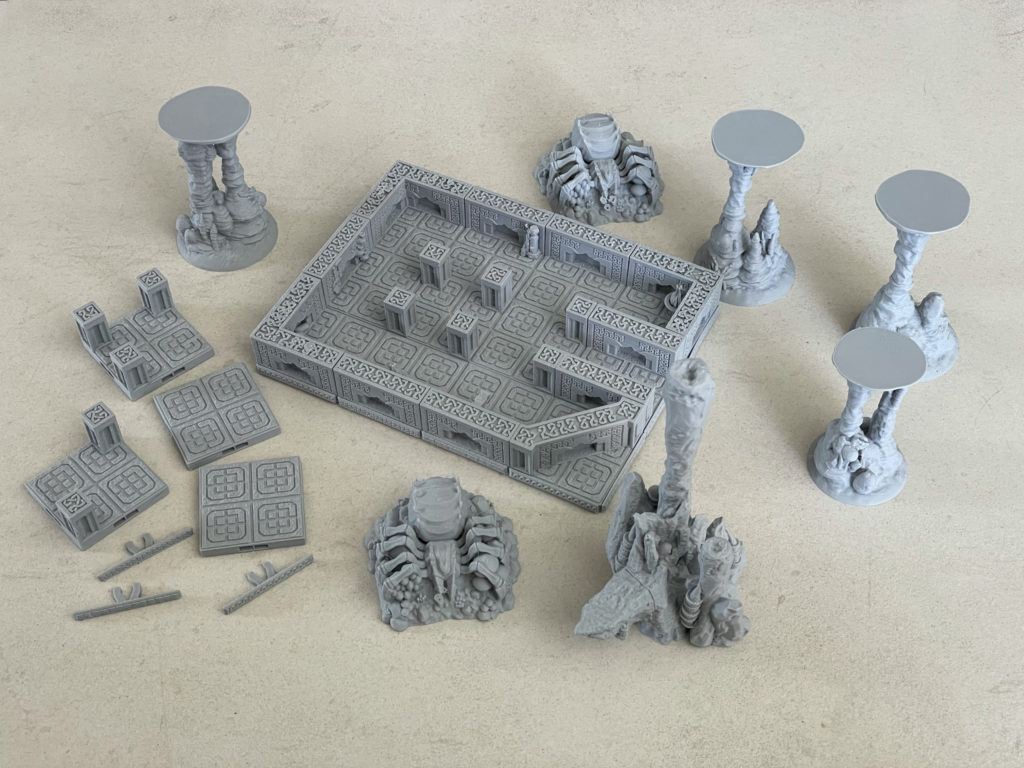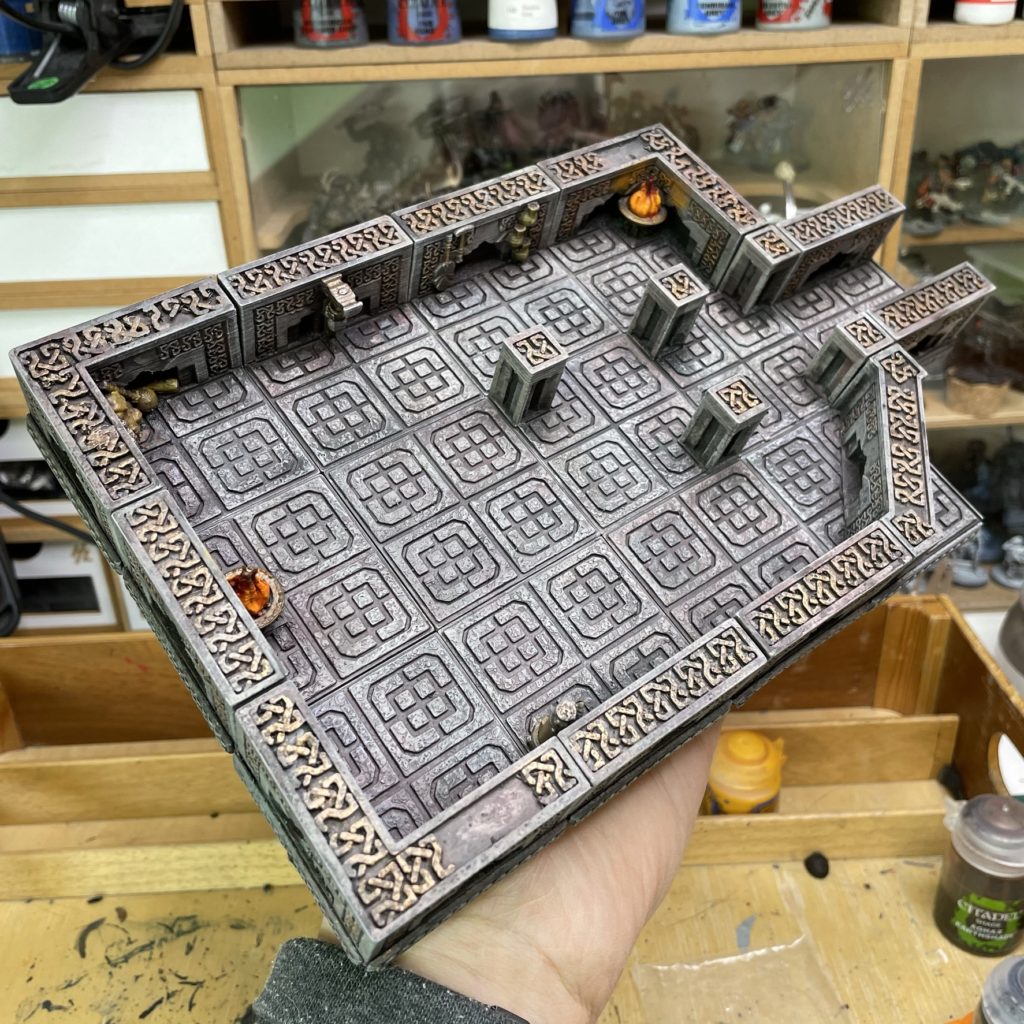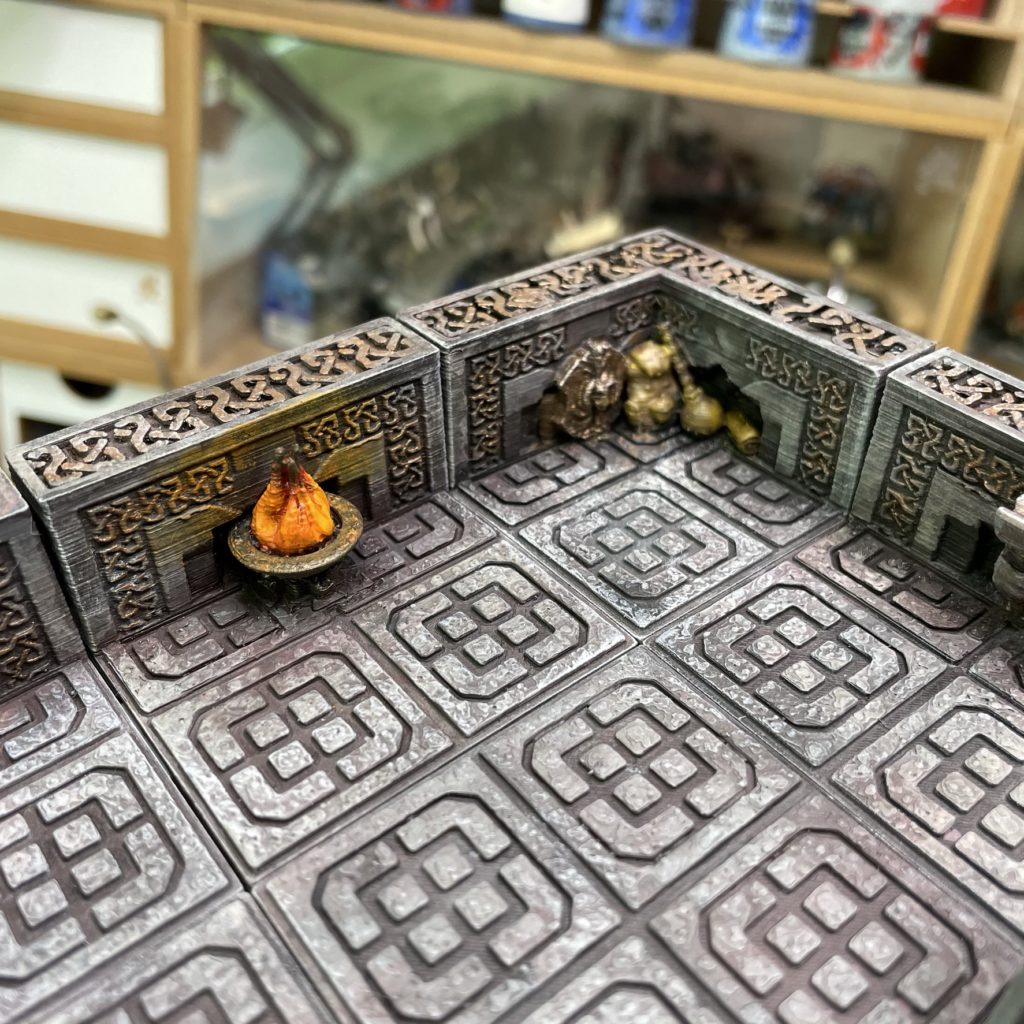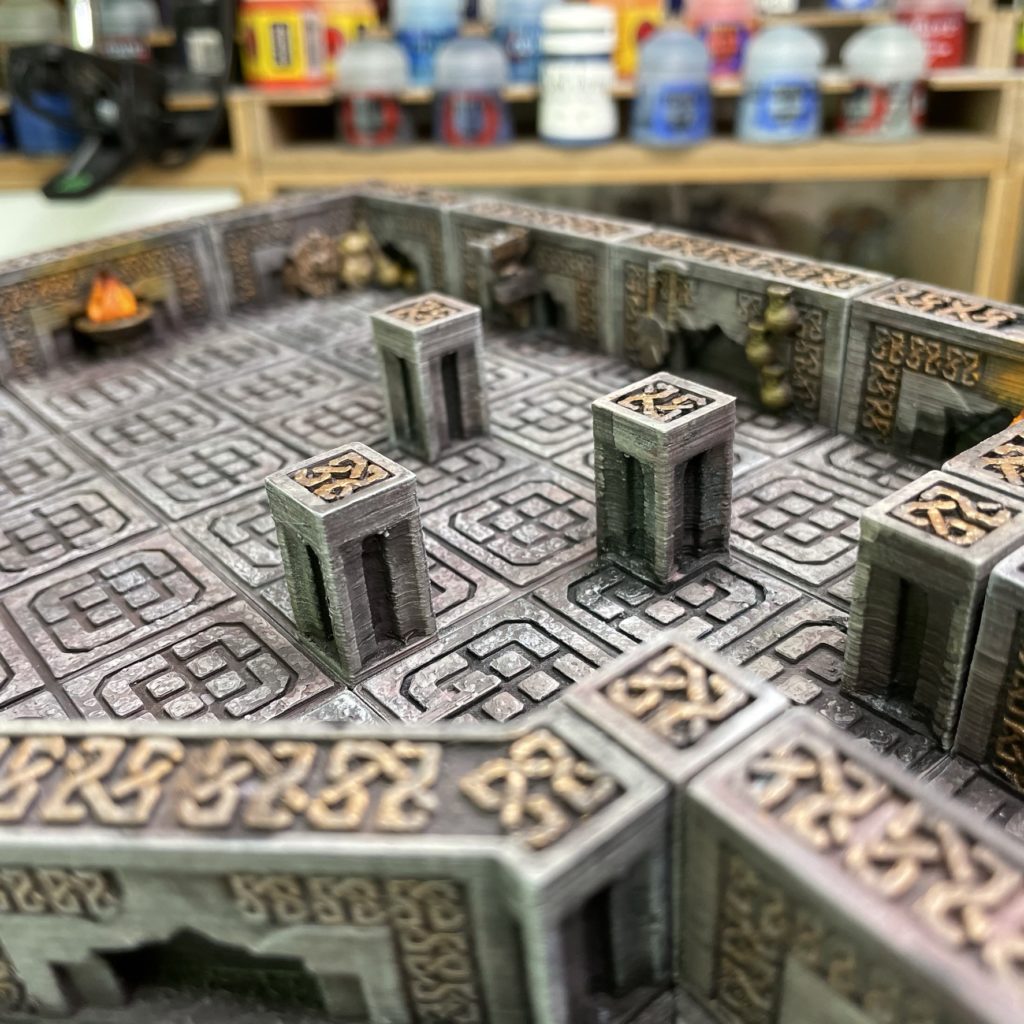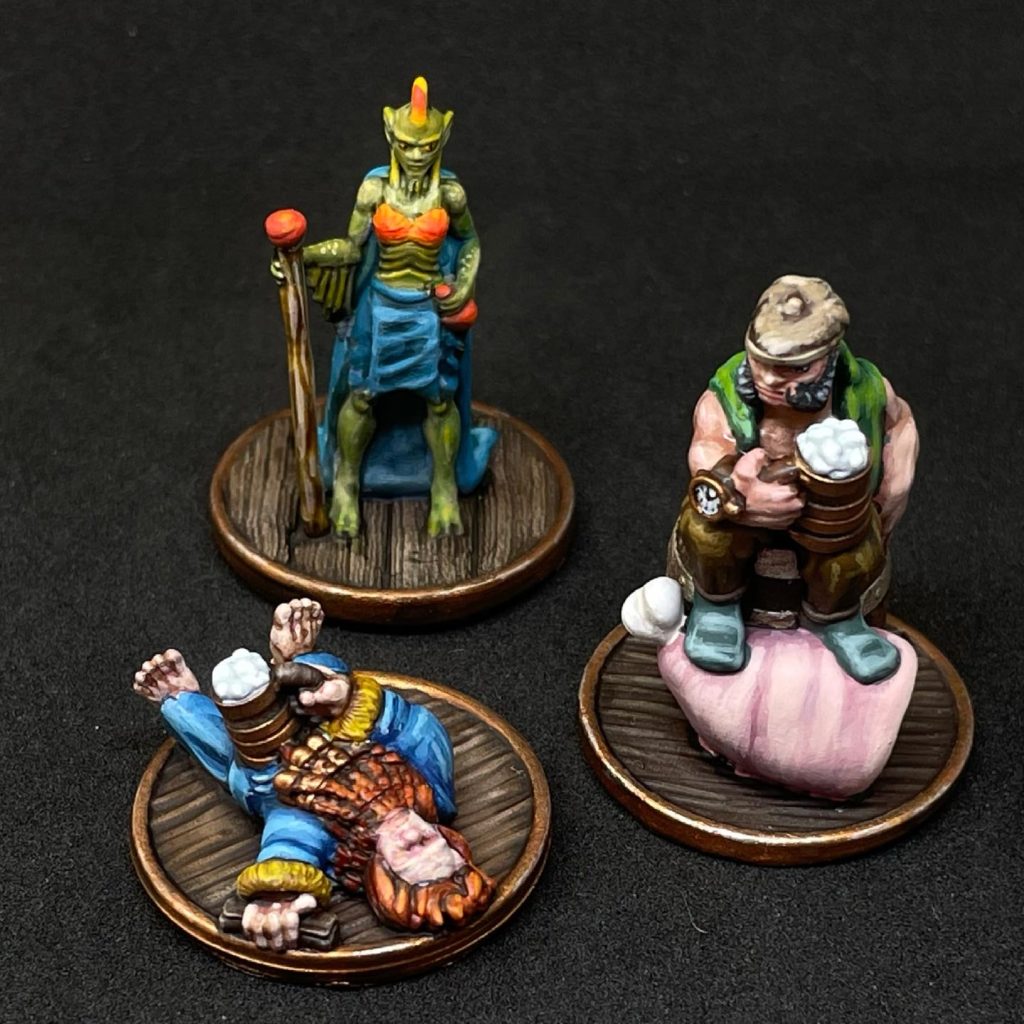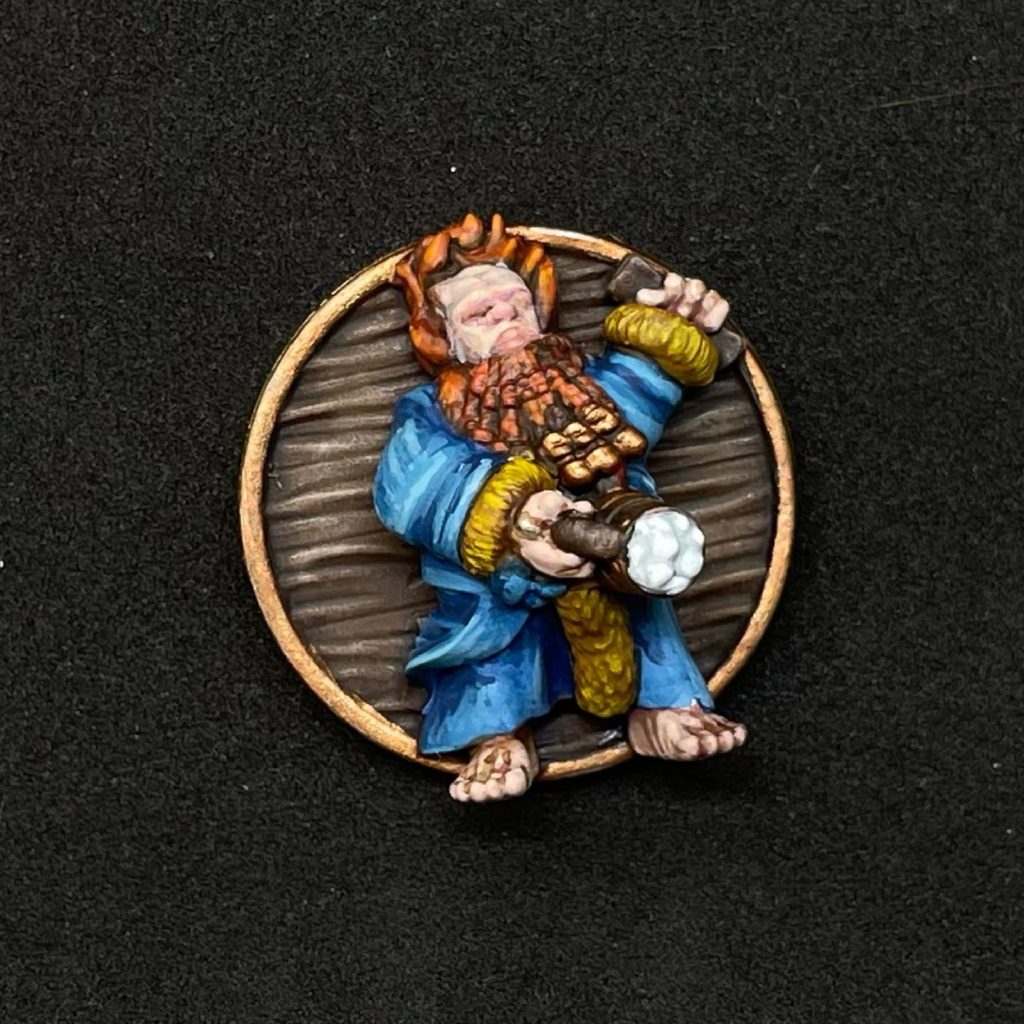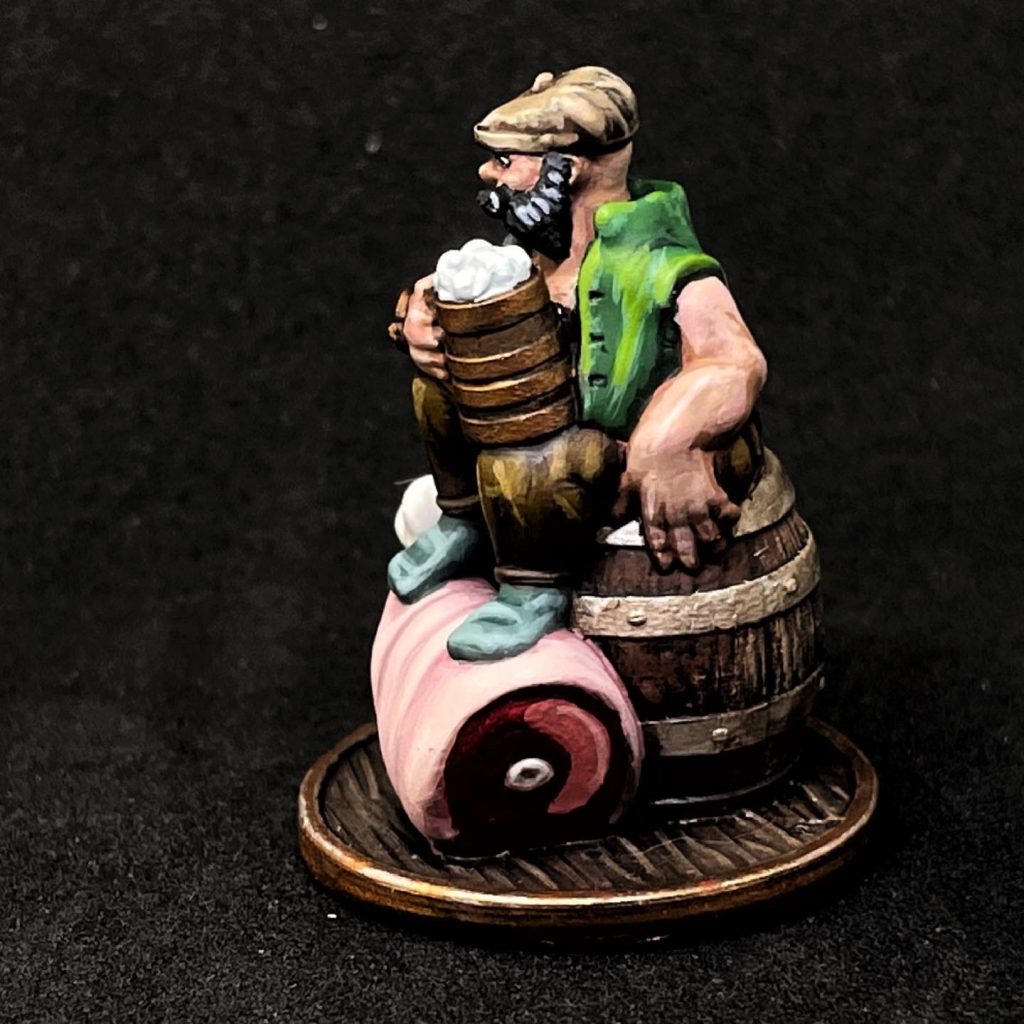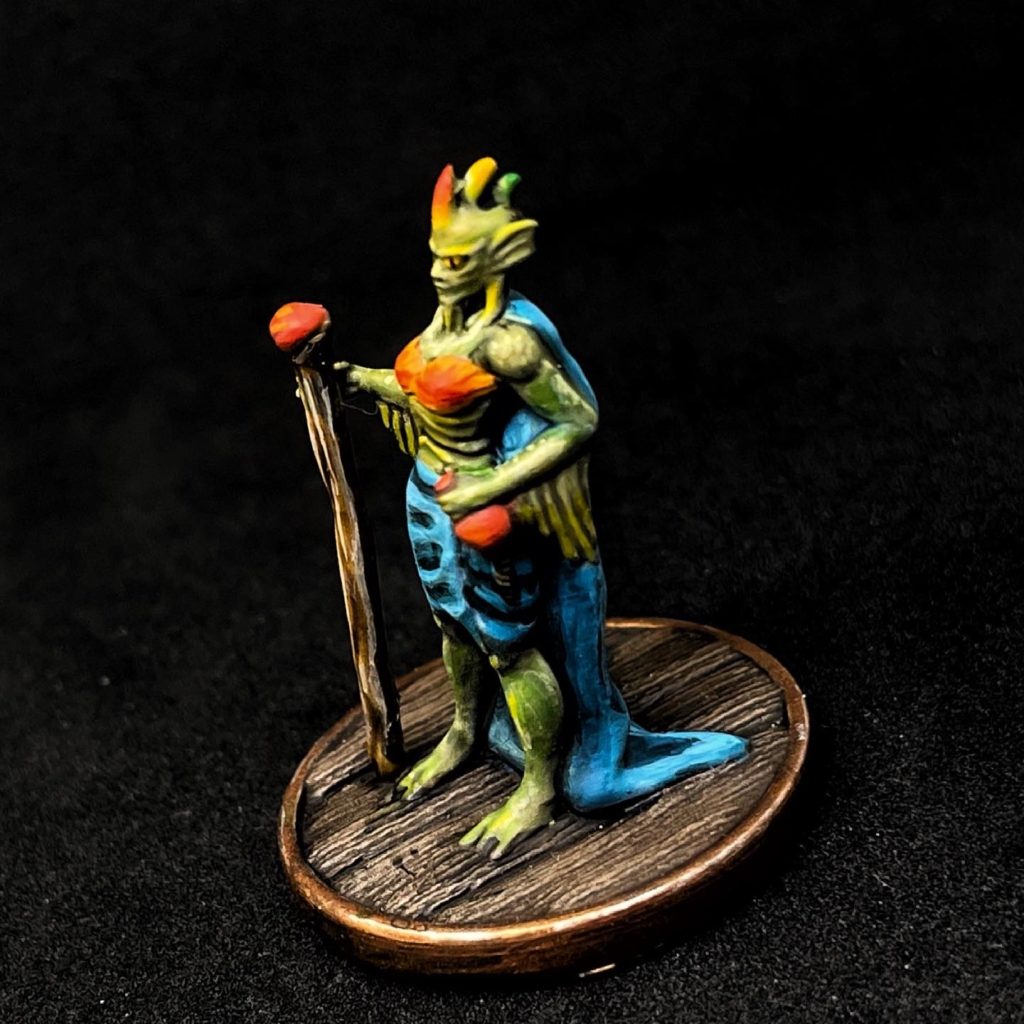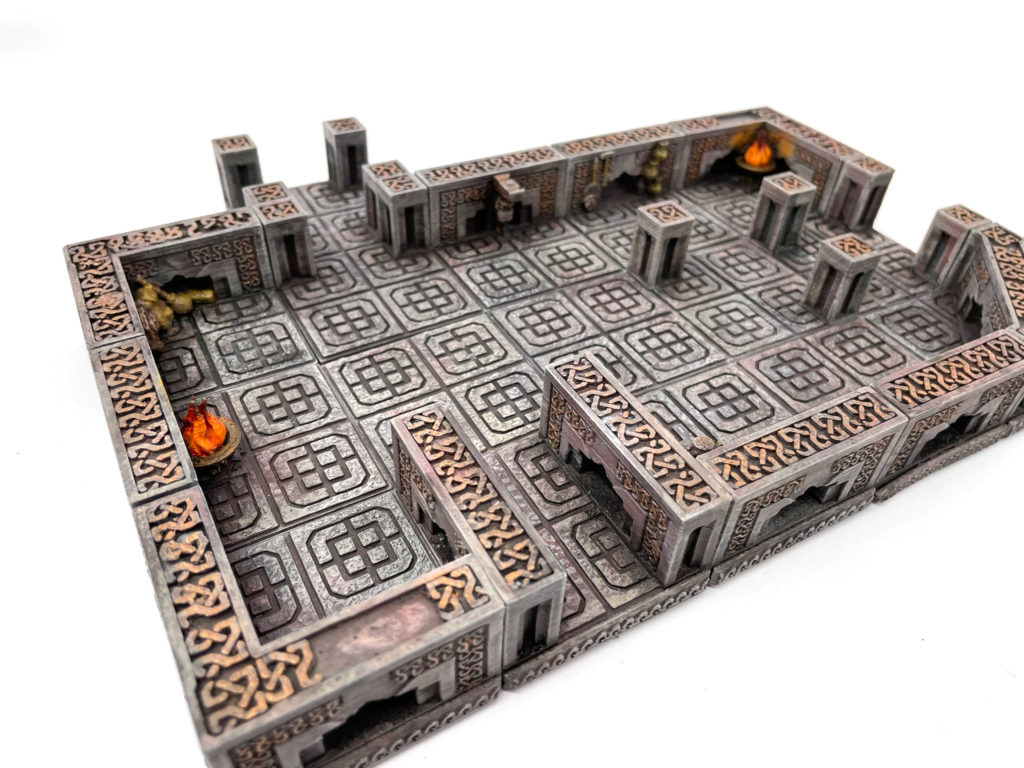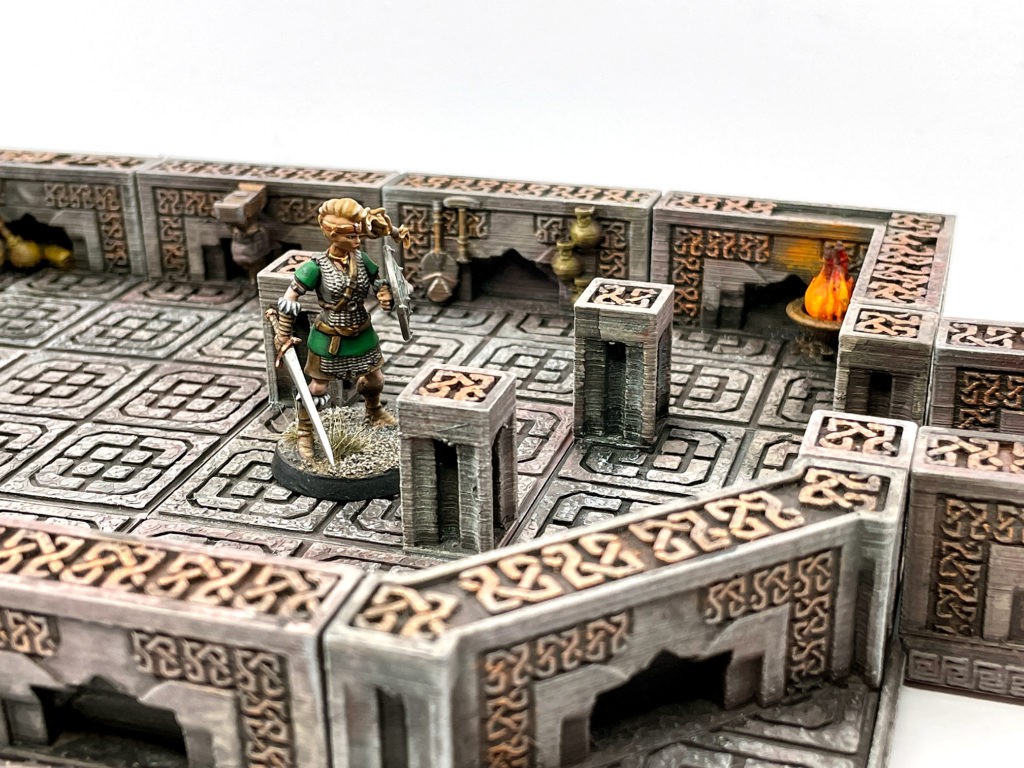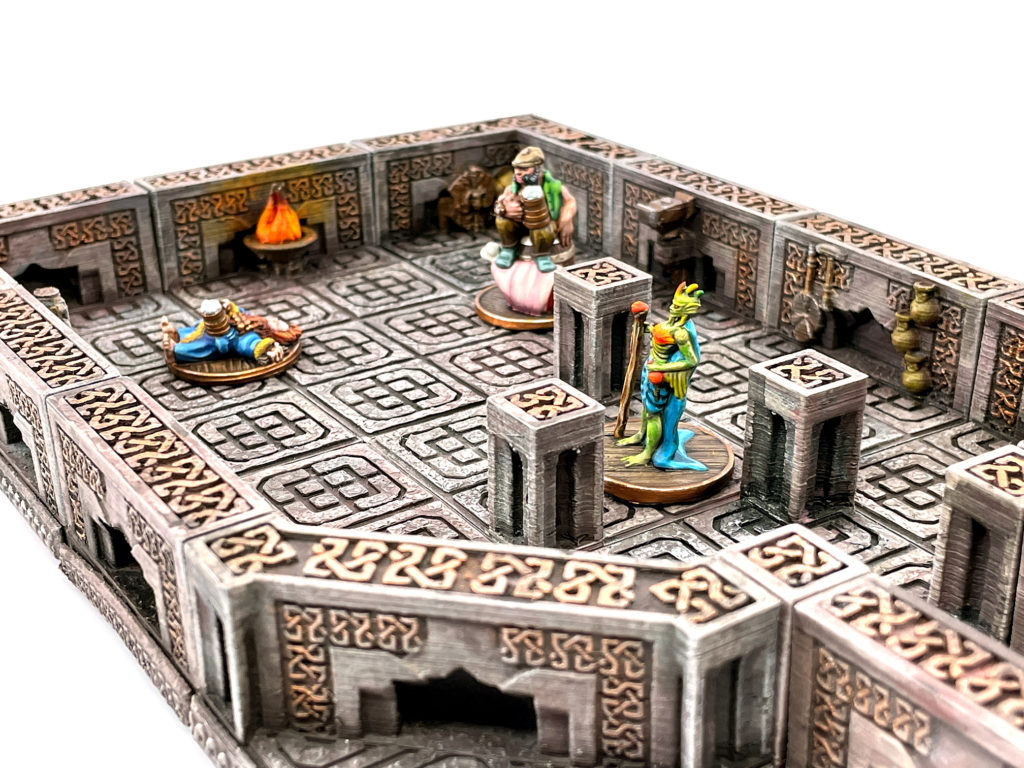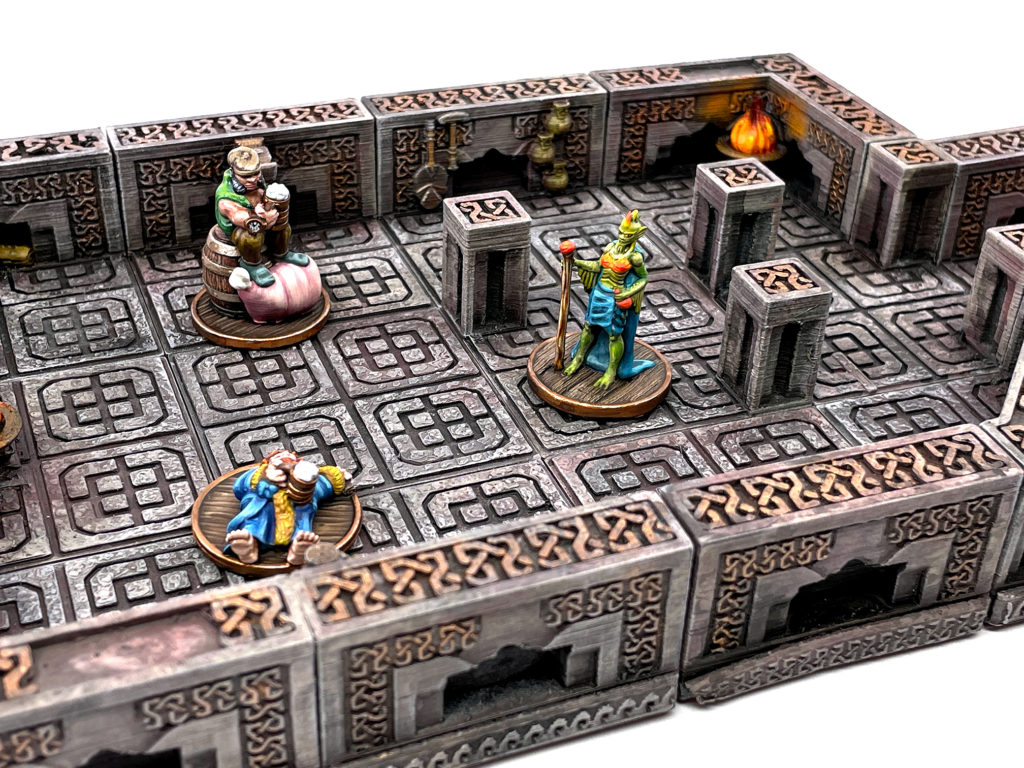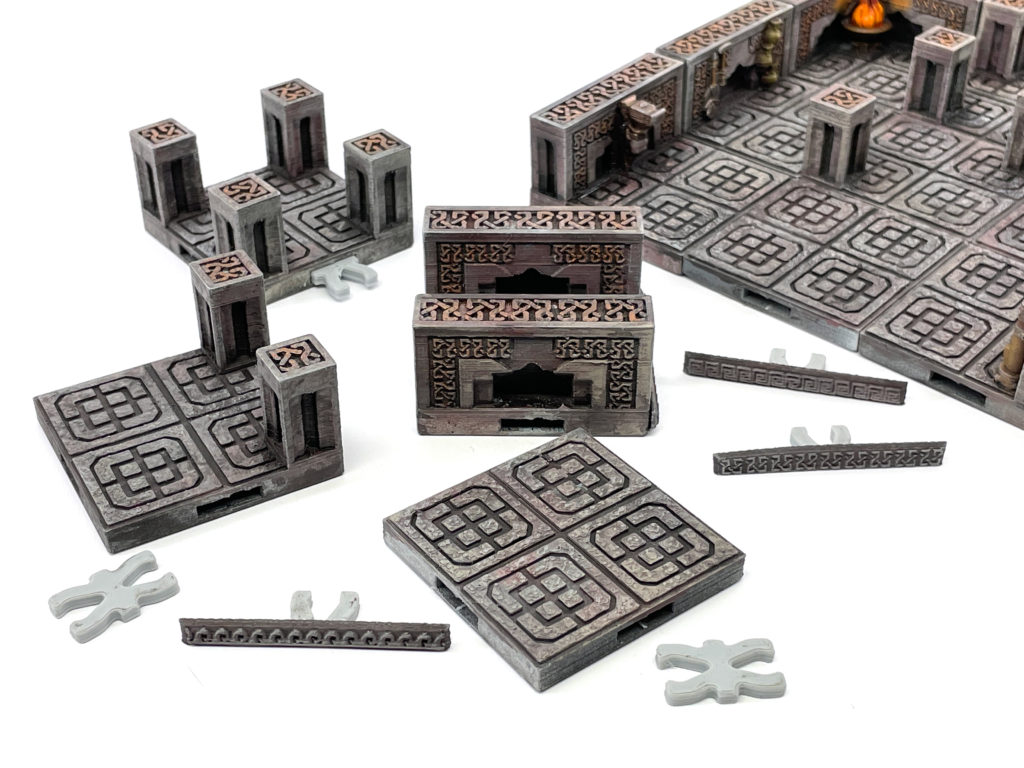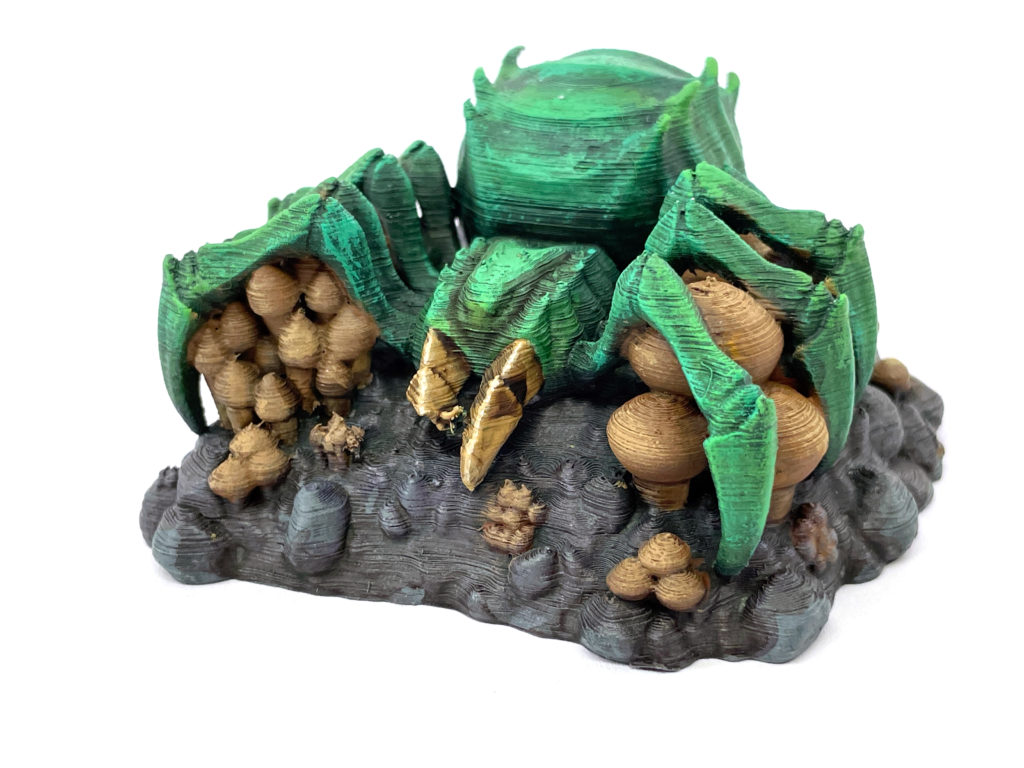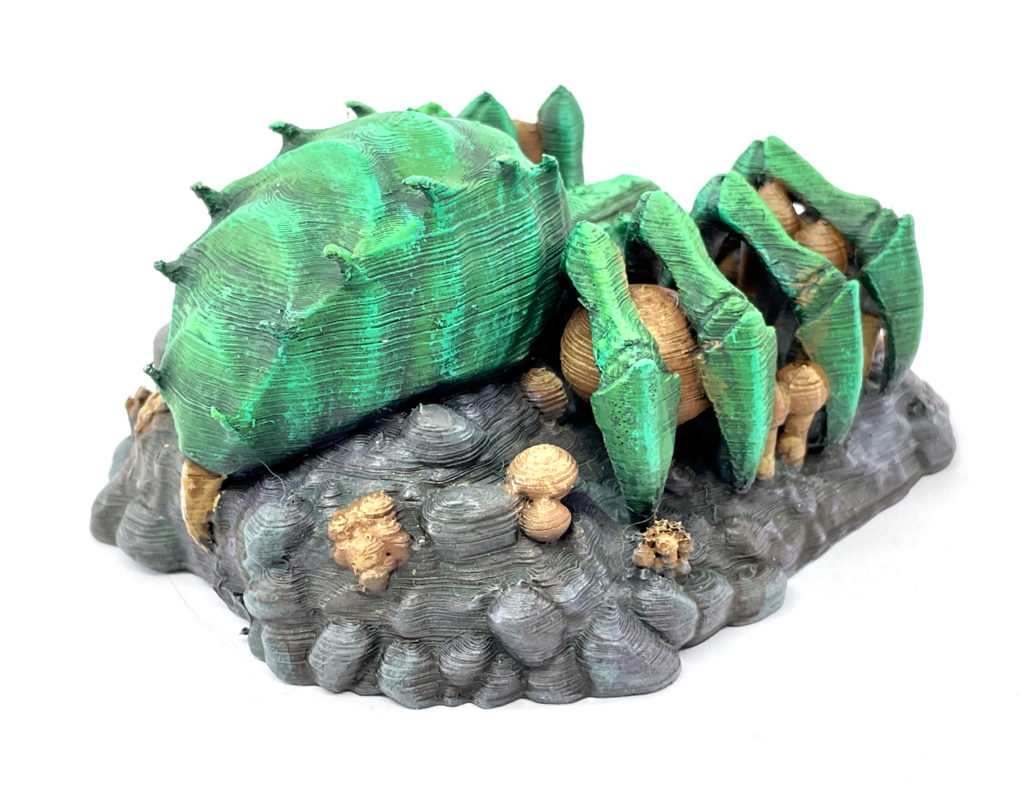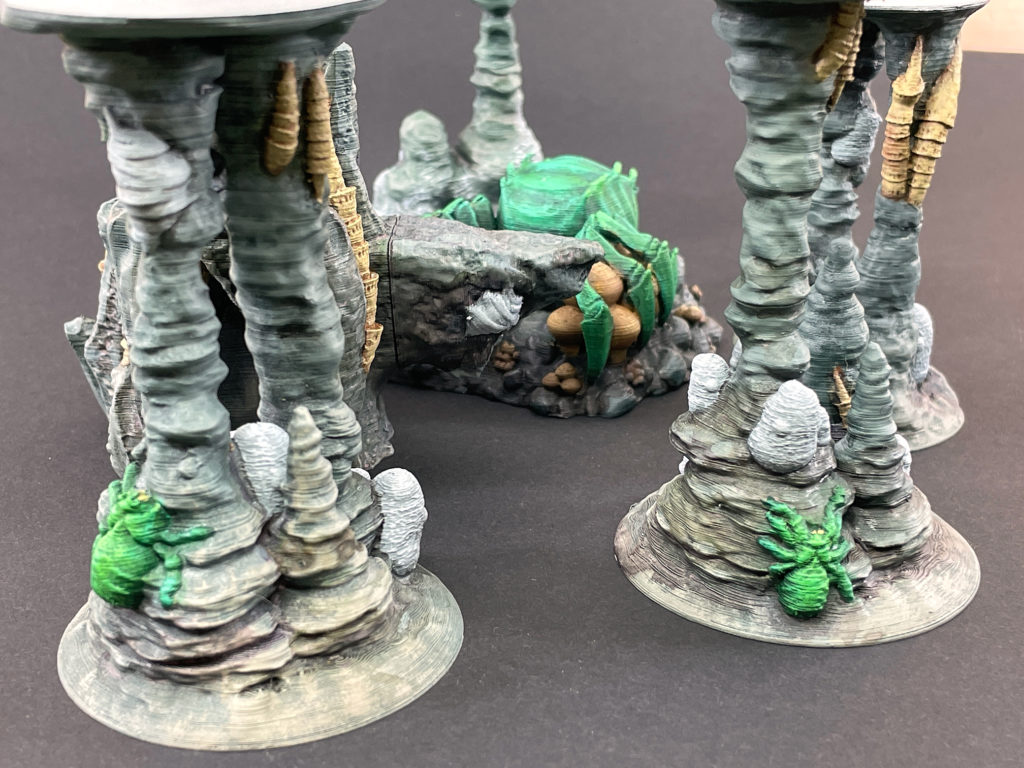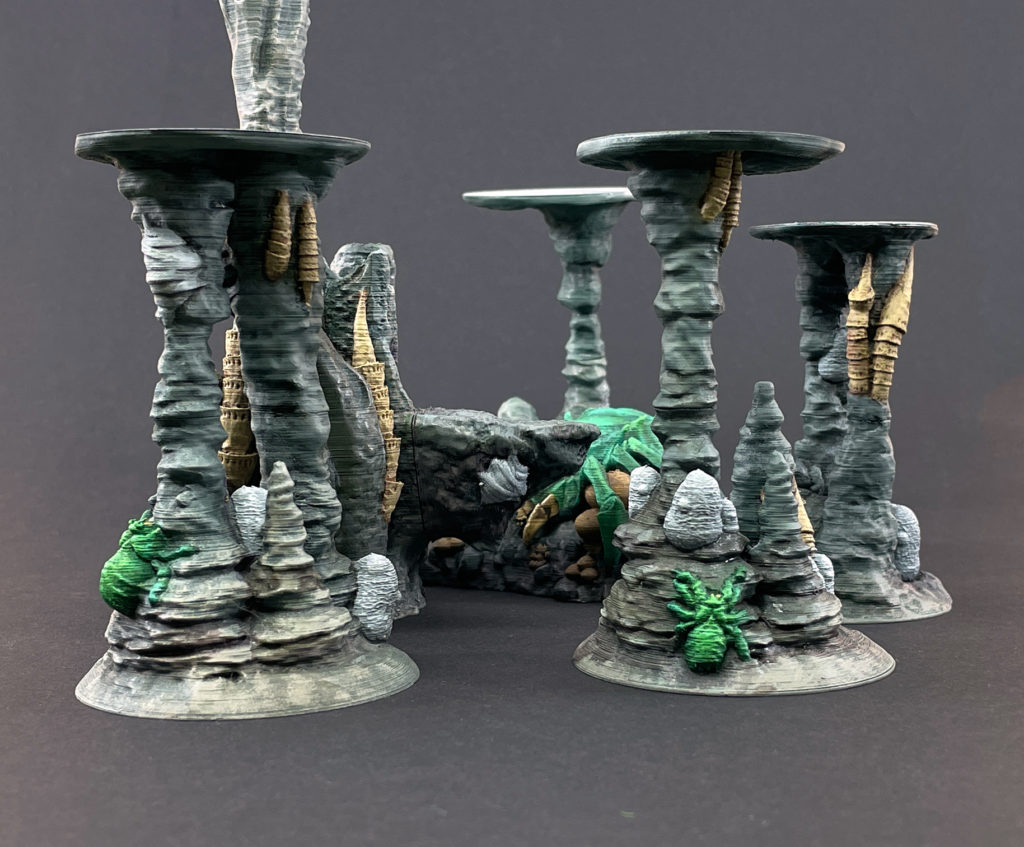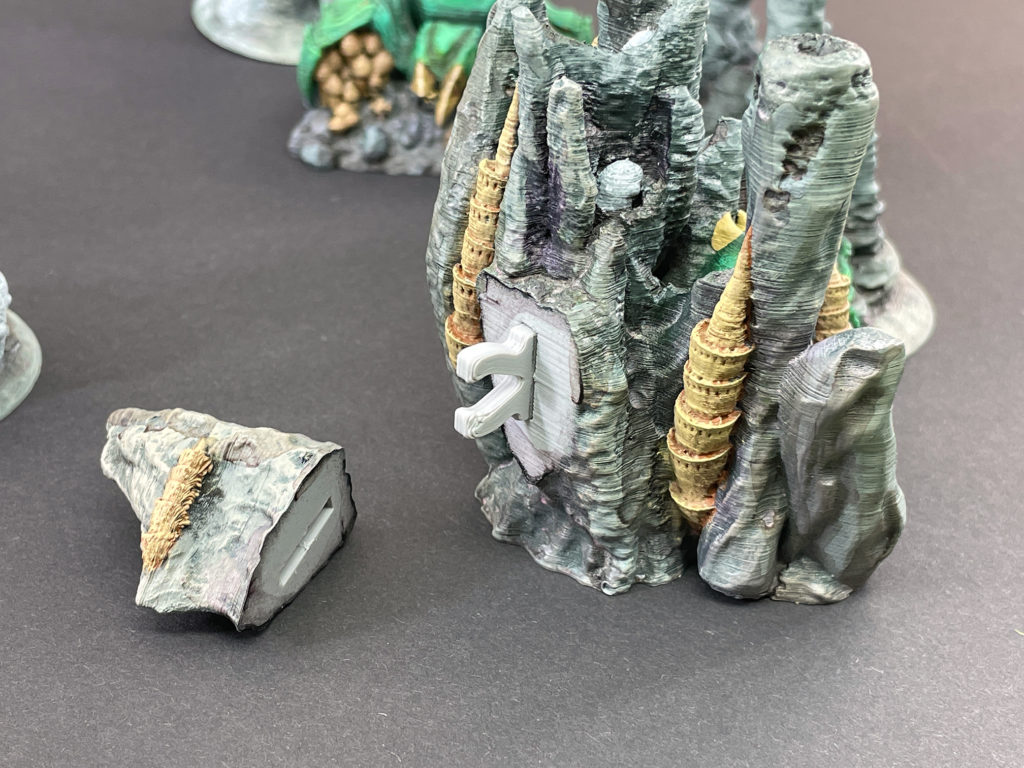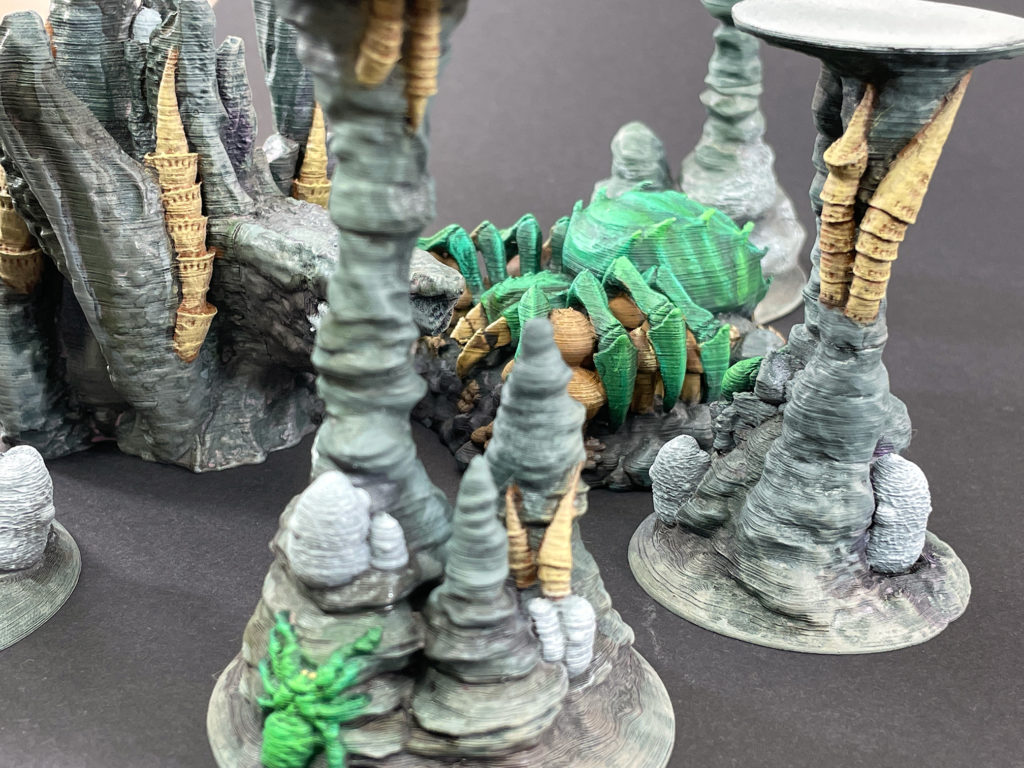Another Month, another Patreon. This march the dices led us to the wide range of series Aether Studios is releasing. They offer a range of modular terrain-models for different genres and every month they add new sets to some of their series. Additionally, they manage campaigns for even more terrain-models via MyMiniFactory. It won’t be easy to cover everything they make, so here is a short overview about the Patreon.

Quickfacts „Aether Studios“:
- Team or Solo: A group consisting of eight designers
- Supporters: 180 supporters (June 2021)
- Pledge-Level-Range: from 2$ up to 50$, monthly files start at 6$. Higher business pledges are sold out right now.
- Without supports, presupported, supportles: Files are generally designed support free.
- Genre: Mainly fantasy, but also steampunk, sci-fi and other genres
- Category: Terrain-models with a few minis and additional terrain details. Mostly modular tiles (Dragonlock compatible).
- Community-Plattform: Discord
- Distributor: MiniHoarder & MyMiniFactory
- Typical Scale: 28mm, mostly also usable for 32mm
- Scalable: Good scalability for larger dimensions. The modular tiles may need some adjustments to make them work. But most of this regards a few small supports, which is doable in every slicer-software.
- Long-Term-Benefits: None, but existing series are growing over time.
- Modular Minis: The terrain is highly modular. Minis and small stuff usually as one-piece-print.
- Bases: No separate bases, minis usually come together with the bases.
Introduction
The focus is clearly on modular (Dragonlock-based) tiles for your RPG campaigns. The creators constantly release new modules and are very open to new ideas and suggestions. The Discord-server has channels for every series and for every kind of support, making it easy to get more information about every series as well as updates. However it can be overwhelming and also due to the number of series and their sets hard to get a quick overview.
When you collect only a few specific series, you might be charged and get nothing of your interest out of it. This doesn’t have to be a problem, as the amount of content you get, is really big. And every series will get more and more sets over time. The welcome-package alone can deliver enough for weeks and months of printing. Otherwise you should check the announcements and decide when to pledge and maybe skip a month, if it clearly doesn’t offer anything for you.
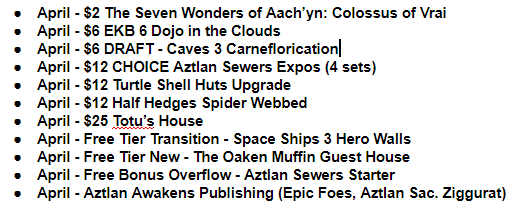
Pricing
The description of the six tiers are quite long and my be bit confusing at first glance, however they can be summed up as follows:
- For 6$ (Soldier of Fantasy) or 12$ (Lt. Youngblood) you get a monthly package of various sets (depending on the creator). These tiers are my personal recommendation, which should fit most people.
- Below these two, there is a 2$ Level Pledge (Citizen) without monthly packs. But it has a small Welcome-Pack and access to a selection of Terrain and Minis, all released 2021.
- The three remaining pledges are a bit more pricey, one of which is currently available for 25$ (Captain of the Guard). Here you get an even bigger Welcome-Pack and access to test print-files and prototype-files.
- The „Captain of Industry“ for also 25$ is limited to 40 people and offers you a Commercial Printing License. Currently sold out.
- The „Commandant“ at least for 50$ (limited to one person) offers you 2 hours of the team per month to be spent on a set of your choice. Currently sold out.
- Every Pledge-Level has a different Welcome-Pack.
After a bit of consideration, I chose Lt. Youngblood for 12$. Although I imagined that I wouldn’t be able to print and paint everything, the pledge would give me a comprehensive overview of the models they offer. Just to give you an estimate; the Welcome-Pack had a size of 12.2 GB and included 807 STL files for nine different series.
The actual release itself had around 1.58GB and consisted of 142 STL files. Terrain sets in general come with a large number of files. One terrain sets amounting to 10 – 30 files, that are still at least around half a dozen sets. Below you find a few examples from released sets during march 2021.
Picked Minis
Looking at the terrain, I had to choose from Dwarven Kingdom Half Size, (Spider) Caves II, Eastern Kingdom Bamboo Garden, Fantasy Villages Totu’s Public House and some Peaceful Trees. The tree are a welcome surprise since they tend to be forgotten by some creators. So in my opinion, it’s nice to have a small collection of trees on your desk. The Caves were a special set, since these were designed as scatter terrain instead of modular tiles. The Dwarven Kingdom Half Size was part of their larger Dwarven Kingdom Series. Special to this set was, that their walls were lower then in the previous sets, so that they weren’t blocking the line of sight for players. I liked the idea of these and wanted to see how good this works with some RPG-Minis on the tiles.
The Eastern Kingdom Bamboo Garden was quite impressive with a stackable modular house and lots of different tiles for fences, grass and crops. I picked them for a runner up, but focused on the Spider Caves and Dwarven Kingdom Half Sized, since these fit better in my timetable.
Although the focus of Aether Studios is on terrain, I found three cute Dwarvs Minis which seemed to have a lot of fun in a tavern. As a special highlight there was an interesting fishlady; Fisha-Louise Totu, First Lady of the Swamp.
All of the terrain parts and also the few Minis come support-free. And since they focus on terrain, you can start with a cheap FDM printer. Even the Minis seem to be designed with FDM-printing in mind.
Printing
Compared to some quickly printed Minis on a SLA printer, printing terrain tiles on a FDM printer seemed horribly slow. And you need lots of tiles or pieces to fill up a table for your scene. Printing the selected files took about one week with short interruptions (66 hours for the dwarven tiles and 36 for the caves). I printed the files with 0.1mm layer height with grey Filament from eSun. A layer height 0.1mm gives you a lot of details, but extends your printing time. If you are in a hurry, you can switch to 0.15 or 0.2 which will still let you get a good amount of details and you can shorten the times above by a quarter or up to half. Sidenote; I recommend grey filament over black, since you can see details a lot better. On the other hand, you could start painting directly on black filament and skip a black primer if you are in a hurry. This is off to you.
The benefit of FDM for terrain, is that you have roughly half of the costs for material and your build-plate is often bigger, so you can print more at once. But most importantly, terrain still looks good with 0.1 or bigger layer height. It doesn’t need maximum details, since it usually only serves as a backdrop for your miniatures.
The only selected files, where I noticed the lack of details due to FDM-printing, was the big Cave Behemoth. A giant spider sitting on a collection of stones and mushrooms (why not on a bunch of eggs? Would fit better to the other parts). This one didn’t come out so good via FDM. If you want to get the most out of this Mini, I would suggest you put it on a SLA printer.
The three miniatures were, once again printed with a layer height of 0.02mm and 8xAntiAliasing on my Elegoo Mars using washable black resin.
As you can see in the following gallery, the details came out good, with the exception of the big spider, she lost a mandibel during print. Even the small webs which are on some of the cave-stones are visible and will later benefit from some quick drybrushing. The stonework on the dwarven-tiles and all the wood from the Bamboo Garden also has good structures which didn’t loose any important details trough FDM-printing.
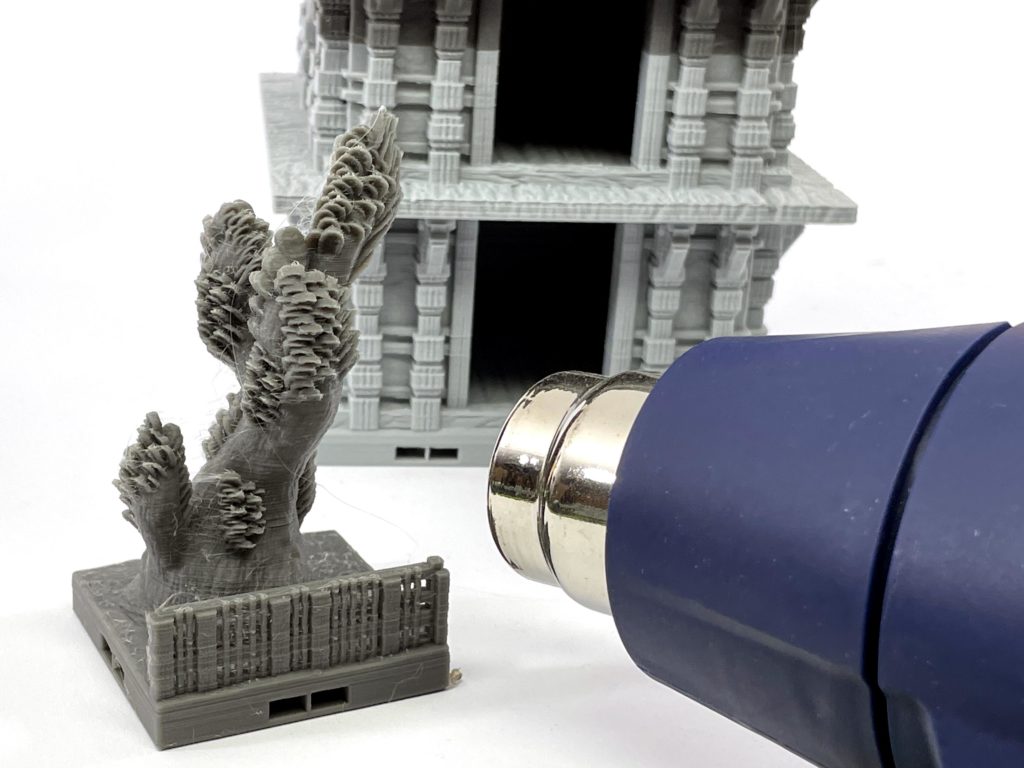
If you have issues with stringing (fine cobweb-similar threads), get a heatgun and use it for a few seconds on your print. But be carefull, since it can quickly start to melt down your print.
Stringing can be an issue especially when you have lots of small details. To a certain degree, you can reduce stringing, here is a great articly by All3DP.
Painting
For terrain I switch from my airbrush to some cheap rattle-cans. Because they are quicker when you need to cover bigger surfaces and they offer a better grip and protection for your paintwork. Terrain pieces are usually less carefully handled then miniatures. So a thin primer through the airbrush can rub off more easily through rough handling than a thick coat from a can. If you decide to skip priming and paint directly on filament, give it a good wash with some soap and apply a good coat of varnish, otherwise the color might rub of.
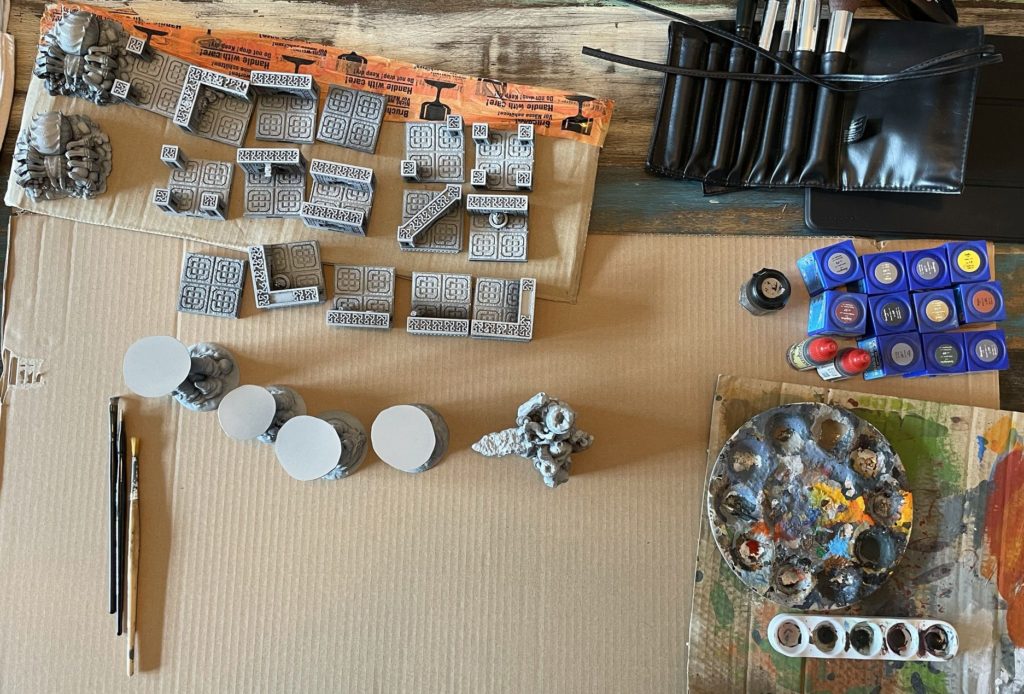
I gave everything a black basecoat and then went over it with a light gray from above, to give it a zenithal highlight. I applied the grey a bit more even from the sides too, to get a brighter basecoat on most of the walls, but tried to let some of the black paint stay in the deepest recesses. To save money, you should get some cheap craft paints. I had none left then and used some cheaper Revell colors for most of the basework instead.
When painting stone, try to not only use different grey tones. Stones are colorful! So I used a mix of dark grey and leather-red-brown for the dwarven tiles and mixed some blue and green into the grey for the spider caves. Since I worked from small pots, I needed to remix my colors more often, which led to different variations. Don’t be afraid of that, as this helps to get a more natural variation. Sponges are a great tool to apply colors with natural looking variatons. When everything had its first layer applied, I took the base-grey and lightened it a little bit up with some sand for the dwarvs and some blueish-white for the caves. A cheap big makeup-brush makes a great drybrush to get quickly over your terrain. Again, I modified the mixture a little bit during painting. The dwarven ornaments were treated with some golden bronze. To get more contrast, I went over everything with a dark wash and dabbed it away with a papertowel (you need a lot of these for terrain). Once dried, I applied a more subtle drybrush.
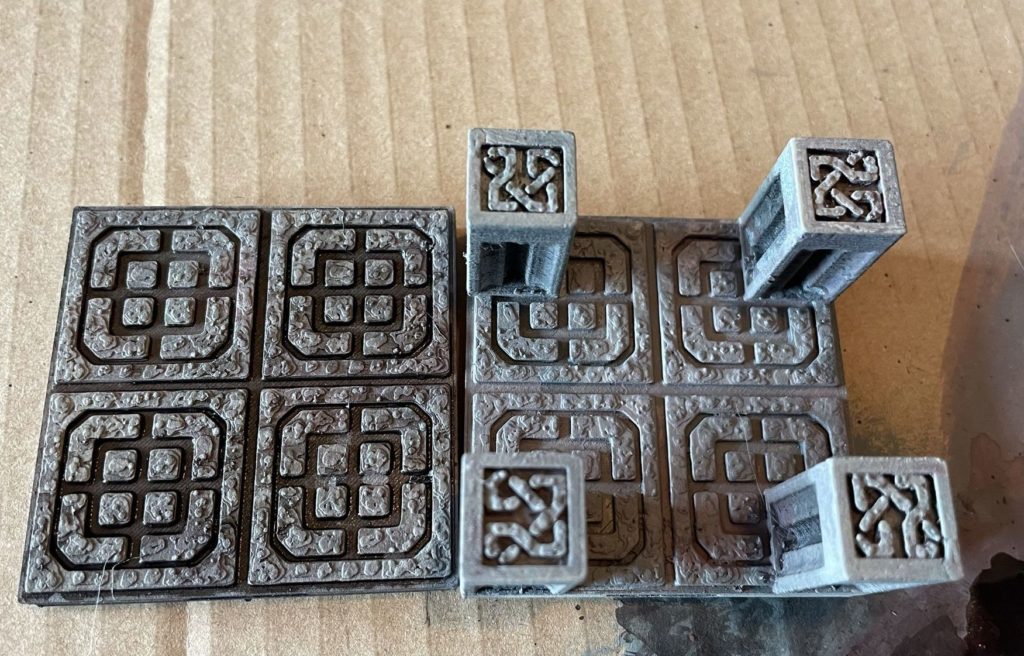
Now it was time for the details, like the fireplaces and the different gear that laid in the dungeon. The spiders got some nasty green applied, the webbings just a simple light grey with off-white. And that’s it mostly for the terrain. You can go through a good amount of pieces with most of the work in one long evening and you get some great results. If you like, you can add a few more hours for some details.
Regarding the small 28mm scale of the Minis, I went with more traditional brushwork on them, after a zenithal preshading. So it was mostly working with thin layers of opaque colors. I decided for simple base-colors for the clothing and focused more time on the skin. Especially the dwarvs took some time to get the shades right. For the Lady of the Swamp I experimented with blues and greens, accented by bright details, so that she would stand out from a bunch of surrounding NPC. Everyone should immediately notice that she is someone special.
The sculpting of the Minis is clear structured and easy to follow. You can add some nice details, like the watch on one of the dwarvs or you can throw some washes on and drybrush them, to get a good result quickly. It would be interesting, when Aether Studios once would release a bigger bunch of NPC. They could probably be done quickly and would be, like the sets itself, of multiple use.
A detail i liked very much, where the bases. The rim asks for some metalcolor and trough that, the whole mini pops out a bit better from your scenery. I have no idea if this was intended or not. But next time when i need to make up bases for RPG will remember this simple trick.
Range of series, modularity and suggestions
Regarding the amount of different series Aether Studios is publishing, it is recommended to go through some basics. A good starting point is their Homepage, where every series is listed and it’s also possible to jump directly to one of the distributional sites (MiniHoarder & MyMinifactory). Next there are some series (right now five different) which are exclusive for patreons. And finally there are the Kickstarter-Series which will over time become part of the regular line up.
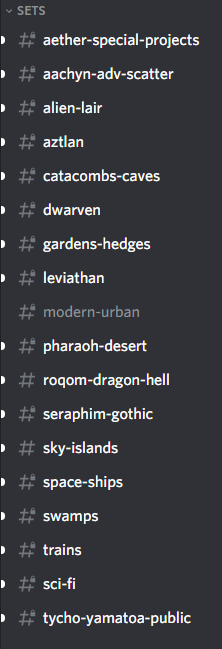
The monthly releases change in an irregular pattern, due to multiple factors. For every series they have their own channel on their discord-server, where you can check on what modules the design team is currently working (see picture on the left). This is also a great opportunity for questions and suggestions. The designers are very open to new suggestions and seem to have fun in experimenting and creating nearly everything people are asking for. Some of the sets even come prepared for LEDs to enhance your game.
Every Series, and also most of the additional packages, come with an PDF which shows you the whole content, give a bit of information about the thoughts behind it and also printing-recommendations. This is really helpful, considering the big number of files.
The variation of series, reaching from classic fantasy, over steampunk, modern, cyberpunk and up to sci-fi, brings the downside, that there probably some kind of tile missing in the set you prefer. You can always ask for such things and chances are not bad, that it will be taken up into the next release for this series. So you may need to be a bit patient.
The big plus side of the array is, that you have access to a really wide collection of different styles. And some of the series have come to quite large set-numbers. Seraphim, Dwarven and Fantasy Villages are for example high in the double digits already and will probably grow even bigger. This allows you, to create extremely big scenerys with multiple different aspects, like blacksmiths, theaters, entrance-rooms and so on. Even with only one printer you could print enough tiles from a series to create one or two scenes for your upcoming roleplaying group within a week. Applying a solid base paint can be done within a day. Considering the fact, that during a normal game session, often not more than only one or two important scenes happen (which would benefit from the tiles on your table), you are in a very pleasant position with this patreon.

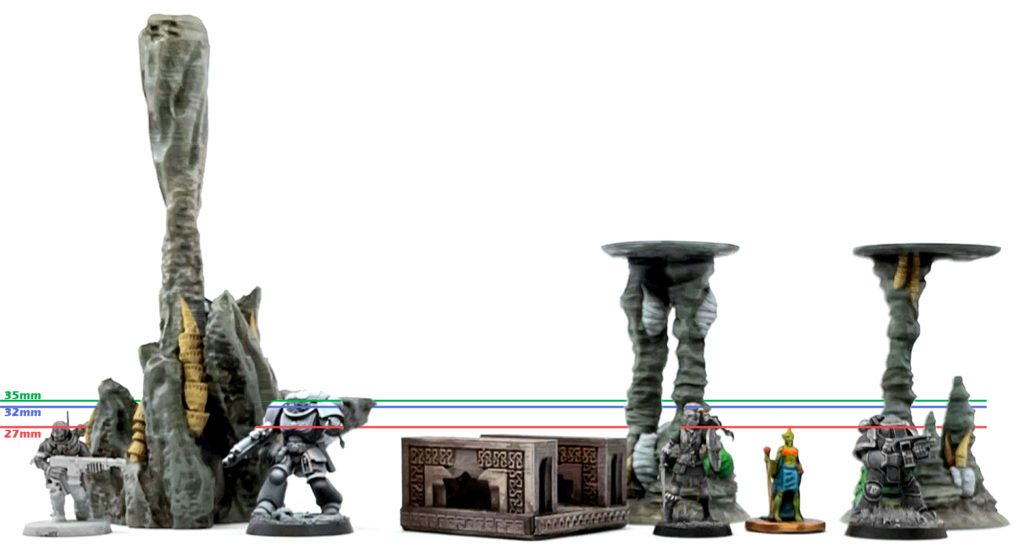
Conclusion
You get classic terrain modules with a big variety and the chance to try out different genres for your roleplaying group and Minis as a bonus from time to time. The homepage with the overview is a big plus, even if it’s very oldschool. But i heard rumors, that there is an upgrade on the way. Getting a good overview is crucial for projects like these and people at Aether Studios did their homework in this topic.
I would recommend this Patreon heavily for DungeonMasters. Also people who are looking for terrain for skirmish-games or similar campaign-games should take a look. Some of the sets seem to have potential for games like Frostgrave. And not to forget, terrainbuilders should check this out too, since it can speed up and enhance your builds, when you integrate a few printed pieces. Personally i would love to go on for a multi-level dwarven-mountain made out of foam and with inserted labyrinths.
Some of the series are way larger than others. All the Dwarven related stuff and also Eastern Kingdom have a rather big range of different sets, so you could spend months and months only with these. If you’re interested in one of the smaller ones, make sure that you bring your demands to the Discord Channel.
The irregular rotation in the releases may not be for everyone. But you can always step down and wait for the later releases, since there are no long-term benefits, it’s an easy and fair game. But there is an advantage many other Patreons don’t have: Since you here have returning themes, your collection of the different series is getting bigger and bigger over time. And you get everything from the same studio, so you also can mix and match and have a somewhat similar style even over different series.
Regarding the quality in details, it’s visible that these things are made for FDM-based printing and more towards mass production. So the details could be more even and sharp, but this wouldn’t make any big difference, unless you print these files on a SLA printer.
Do you also own a 3D printer? Do you have favourite creators for printable stuff? Post them in the comments. I’m always excited to explore new designers.
And that was the second entry for #PaintallthePatreons. If you paint Minis from a Patreon yourself, please feel free to use this hashtag on social media. Wouldn’t it be cool if we could build up a searchable community with this?
You can take a look at some HighRes-Pictures of the painted Miniatures in the following gallery.
If you liked this article and want to read more about this, feel free to follow me on one or more of these platforms.
Live-Painting every Tuesday on Twitch at 19:00 GMT














